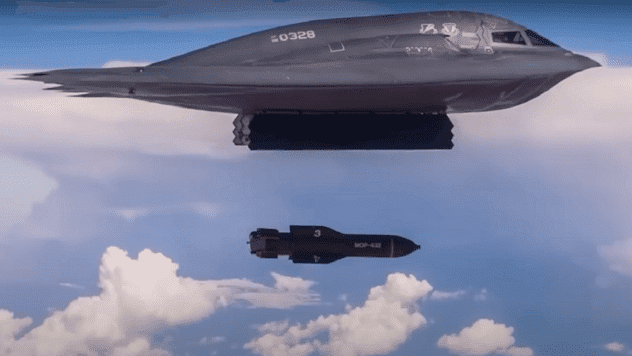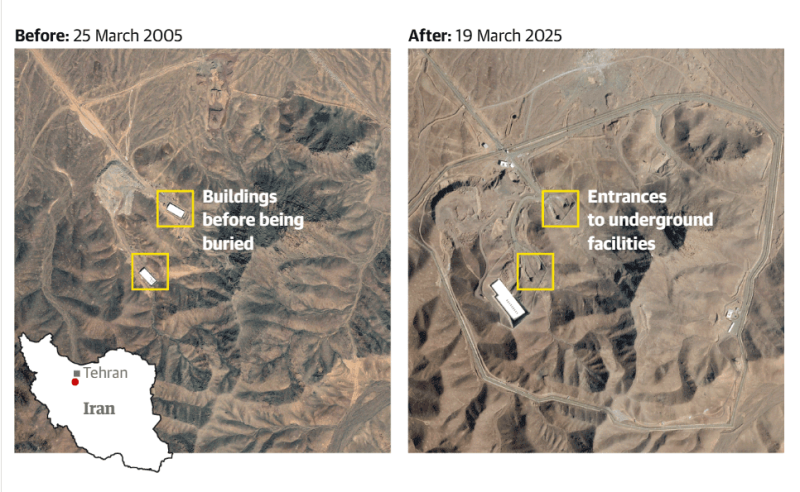
On Sunday, June 22, the US struck three nuclear sites in Iran: Natanzi, Esfahani and Fordow, the latter considered the most valuable target. It is known that the US hit Fordow with a 13-ton GBU-57 Massive Ordnance Penetrator (MOP) bomb.
ICTV Facts reveals the characteristics of the GBU-57 bomb and whether it is capable of destroying Iran's nuclear facilities.
What is known about the US attack on Iran
In a televised address to the American nation, Donald Trump called America's strikes on Iran a remarkable military success and warned Tehran that it must make peace quickly or face much larger attacks.
Now watching
The US reportedly dropped GBU-57 heavy bombs from B-2 stealth bombers and Tomahawk cruise missiles. Details of the strikes on Iran could be revealed at a Pentagon briefing today.
Iranian state media acknowledged that part of the Fordow facility was attacked but played down the extent of the damage.
GBU-57: What is known about the American bomb
The massive 13-ton non-nuclear GBU-57 MOP (Massive Ordnance Penetrator) bomb.
It is the only bomb believed to be capable of hitting key Iranian nuclear sites hidden deep beneath mountains.
The GBU-57 bunker buster can hit targets at depths of up to 61 meters, and can penetrate even deeper with multiple strikes. Until now, the GBU-57 has only been dropped during testing.
The only aircraft capable of dropping the modern GBU-57 MOP is the American B-2 Spirit stealth bomber. Each B-2 can carry two GBU-57s. Until recently, six B-2 stealth bombers were based on Diego Garcia in the Indian Ocean, but in early May this year they returned to Whitman Air Force Base in Missouri.
Characteristics of the GBU-57 bomb
- Classification: bunker buster aerial bomb,
- Weight – 13.2 (13.6) tons,
- Warhead – 2.7 tons,
- Length – 6.3 meters,
- Penetration depth is 60 m underground and 16 m into concrete.
The GBU-57 bomb body is made of special high-strength steel.
The Americans used its predecessor, the 6.8-ton BLU-82 Daisy Cutter, during the Vietnam War, dropping BLU-82 bombs from Hercules aircraft to clear landing sites in the jungle for helicopters.
These bombs were also used during the first Gulf War and against al-Qaeda in the Tora Bora caves in Afghanistan after the September 11, 2001 attacks.
The next giant American bomb was the GBU-43 Massive Ordnance Air Blast, known as the MOAB and nicknamed the “mother of all bombs.” The MOAB weighs 9,850 kg. The US Air Force used this bomb against an ISIS cave complex in Afghanistan in 2017.
Facility in Fordow

Photo: Guardian, Institute for Science and International Security, Planet Labs
The Fordow uranium enrichment plant near the city of Qom is located about 152 km southwest of Tehran. It is believed to house important centrifuges for enriching uranium. The facility is built into a mountainside, about 80 meters below ground and rock.
The Israel Defense Forces have already damaged several nuclear targets in Iran, but the Israelis do not have the weapons to hit the Fordow site.
At the same time, IAEA chief Rafael Grossi said that the most sensitive elements of Iran's nuclear program are hidden at a depth of up to 800 meters. Therefore, even for a GBU-57 bomb, this is too difficult a target.
Iran's nuclear facility at Fordow was reportedly protected by Iranian and Russian air defense systems, although the Israeli Air Force had largely neutralized Iranian air defenses prior to the strike.
The US carrier strike group USS Vinson is already in the Arabian Sea, and another carrier strike group USS Nimitz CSG is heading from the east.

